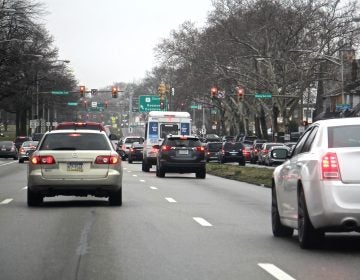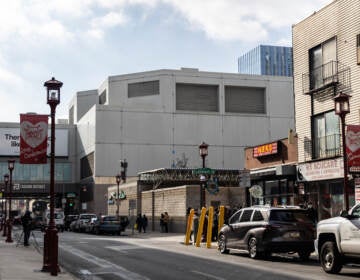Running and walking on the Delaware River Trail may be putting yourself at risk
Construction, contractors, and neglect limit your ability to walk on the designated paths along the Delaware.
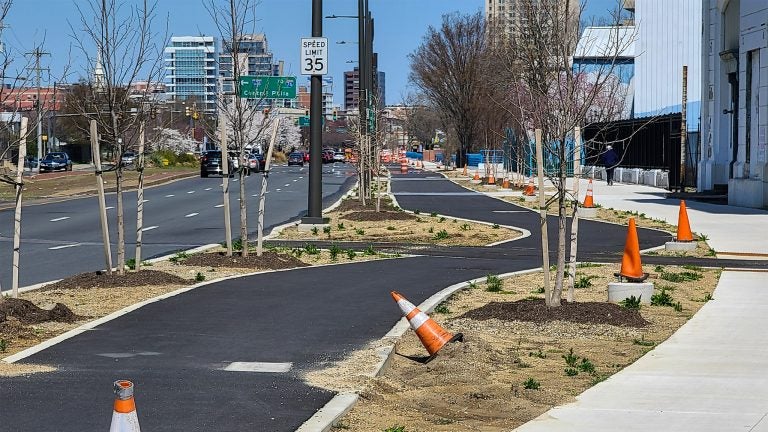
File photo: A portion of the trail along the Delaware River waterfront. (Mark Henninger/Imagic Digital)
Has anyone not experienced a pedestrian crossing in front of your green light, eyes glued to their phone and oblivious to the world around them? Or the runner who darts from out of nowhere to cross mid-block? Many more drivers are inattentive and occasionally dangerous, but somehow pedestrians oblivious to the rules seem to stand out.
Just as there are – thankfully – many more safe drivers than dangerous ones, the vast majority of pedestrians and runners want to obey the law, if only the city and its drivers would not force us into dangerous situations.
Witness, for instance, the danger that’s been allowed to flourish along a route that is supposed to benefit those on foot or on a bike.
Center City residents along the Schuylkill River have Kelly Drive, East & West Fairmount Parks, and Wissahickon Valley Park as an escape from the dangers of vehicle traffic. And residents of South and Northeast Philadelphia along the Delaware River have the Delaware River Trail along Christopher Columbus Boulevard – or do they?
As a 12-time marathon runner and resident in the Society Hill/Queen Village area, I enjoy using the expansive sidewalk and off-road walking trail that runs from Penn Treaty Park and Rivers Casino in the north to Walmart and the Pier 70 shopping plaza in the south – a round trip of 6.4 miles.
However, long sections of the path were closed for the two years of pandemic lockdown while an adjacent bicycle path, part of the East Coast Greenway, was built between the sidewalk and the street. With the work now substantially complete, you might think that the sidewalks and trail are again open to those who want to stroll or jog, but you would be wrong.
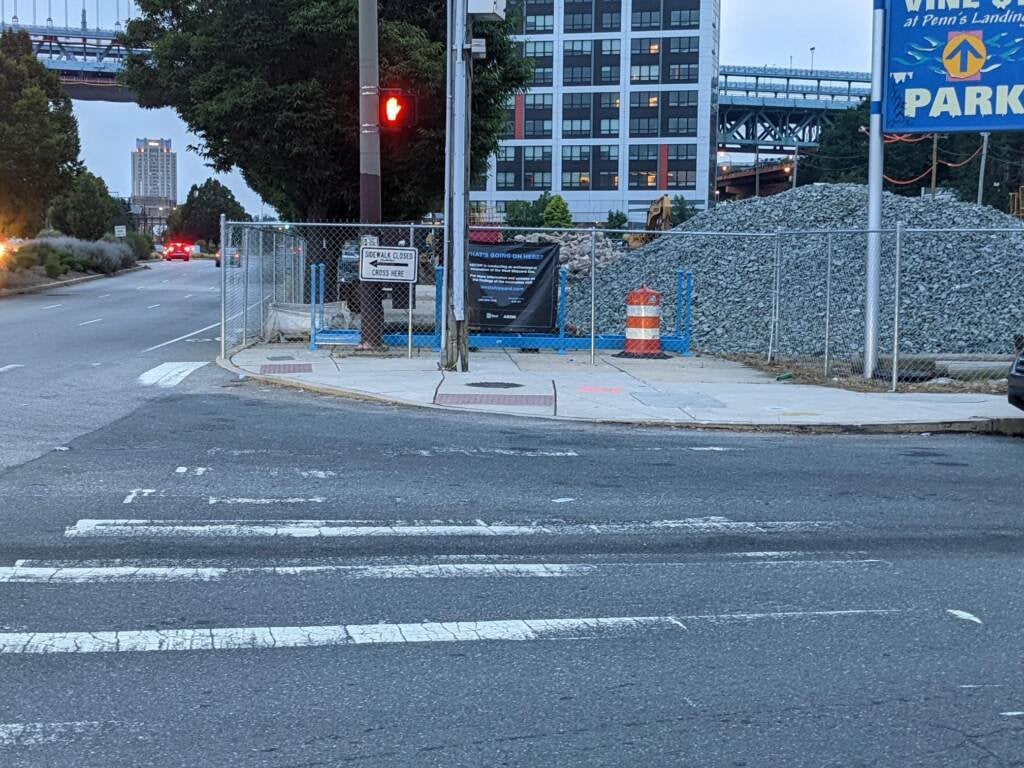
Along the entire length of the Delaware River Trail, service vehicles block the sidewalk during the day so that workers can easily access their parts and supplies near the many restaurants, stores and construction projects that line the route. Those without permits get their business owners to pay any tickets they might receive for the flagrant parking violations. In the afternoon and evening, cars near the bars fully block the sidewalk and force pedestrians into the bike lanes and the street.
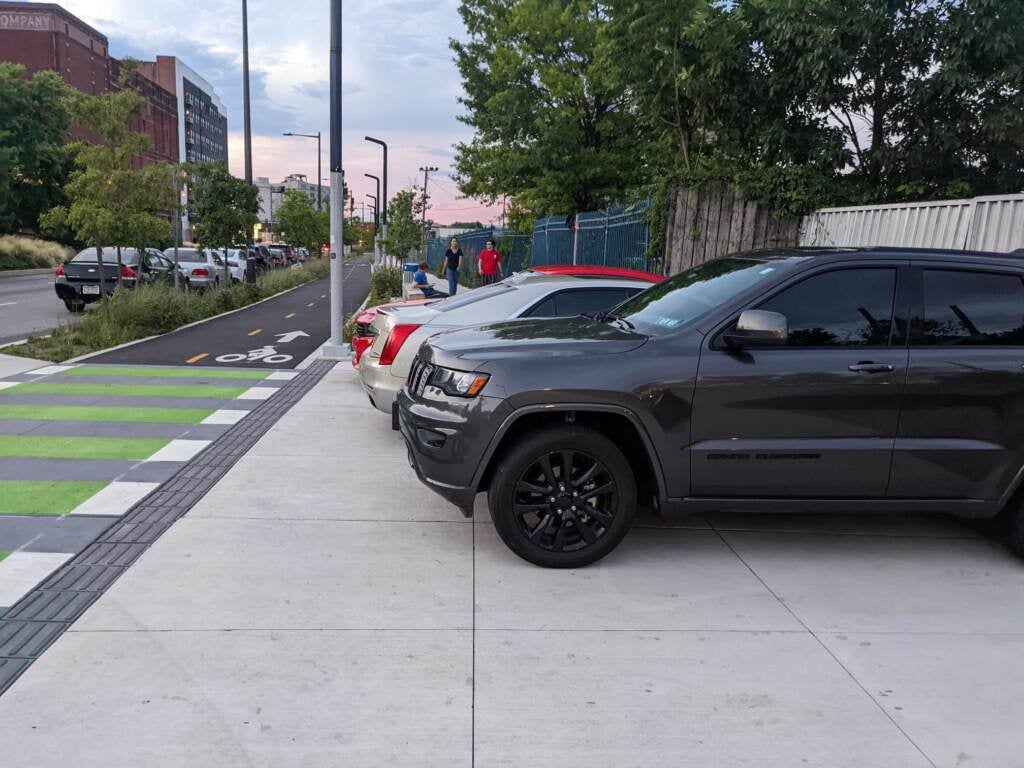
A parking authority worker told me that the cars most often belong to off-duty police working the bars. As you might expect, it’s hard to ticket an officer. I took a picture of three cars in the public right of way outside of Cavanaugh’s River Deck and was immediately approached and threatened.
Is the other side of the street an option? Not when there is construction completely blocking the sidewalks.
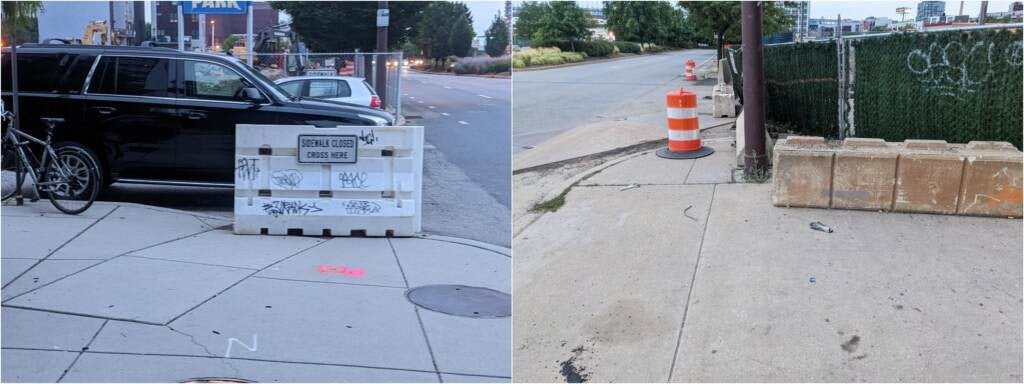
And southbound near the big box stores, the off-street bike path is closed with a chain link fence and a homeless encampment has taken over the area.
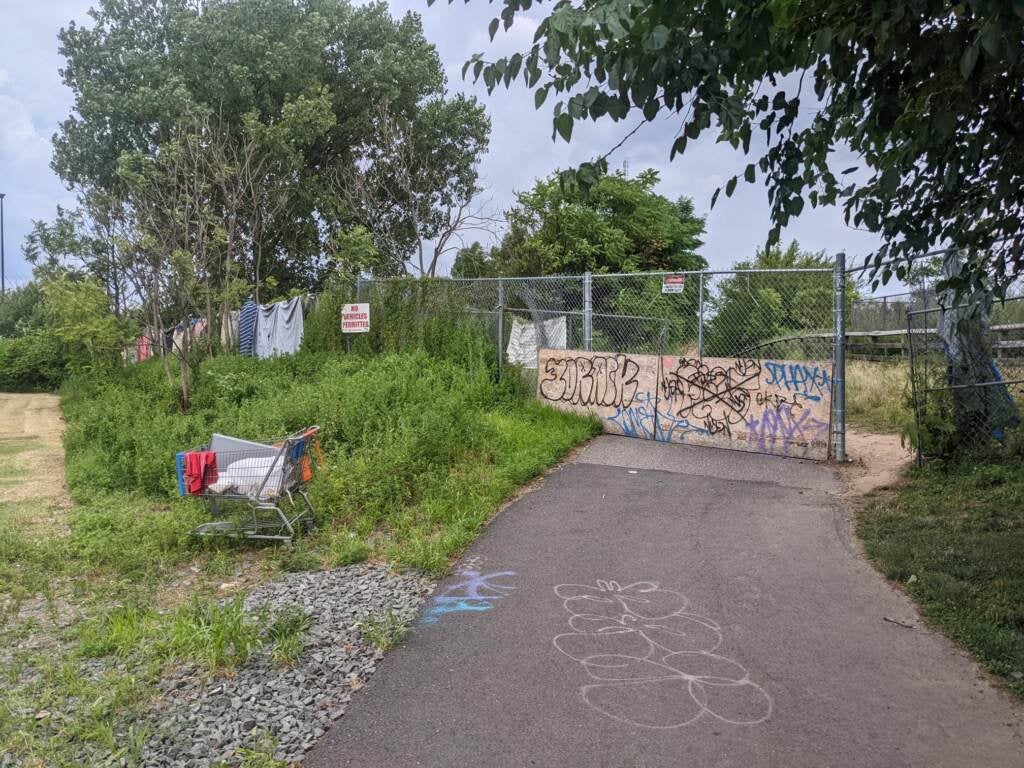
Philadelphia has a Complete Streets program, whose goal is to address “transportation options for all Philadelphians.” The office is planning – and has completed – long-range bicycle initiatives, but has no dollars allocated to pedestrian-only projects.
Further, the office is only responsible for transportation projects, not for maintenance. That’s why the brand-new bike path along Martin Luther King, Jr. Drive is already completely overgrown and difficult to use.
Successful transportation solutions require the three E’s – engineering, education and enforcement. The simple solution – as is the case throughout the city – is for businesses, construction companies, and their workers to learn about and maintain awareness of the needs of others who use the streets and sidewalks.
The Bicycle Coalition of Philadelphia offers a good example of how to lead an education campaign based on their extensive advocacy for cyclists.
For now, though, the lack of access to dedicated areas for running and walking in the neighborhoods along the Delaware River force us onto city streets with their uneven cobblestone, traffic lights, congestion, and ever-present outdoor tables.
David Haas recently retired from his career as a consultant and project manager for major government financial and technical programs. He moved to Philadelphia 6 years ago and is active as a volunteer in community associations, non-profits, and the religious community.

Subscribe to PlanPhilly
WHYY is your source for fact-based, in-depth journalism and information. As a nonprofit organization, we rely on financial support from readers like you. Please give today.







